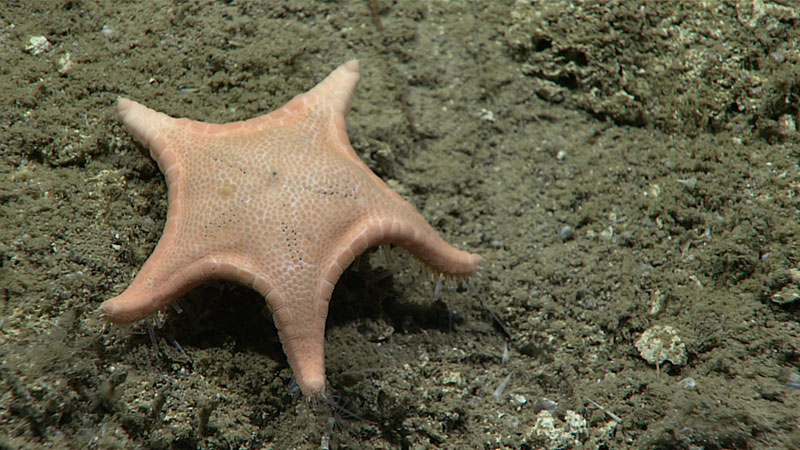October 7, 2020: Sea Star

Image courtesy of the NOAA Office of Ocean Exploration and Research, Gulf of Mexico 2018. Download larger version (jpg, 1.2 MB).
Named after the NOAA Office of Ocean Exploration and Research’s remotely operated vehicle Deep Discoverer, this newly identified sea star (Sibogaster bathyheuretor) was seen feeding on food items from the soft, unconsolidated seafloor during the Gulf of Mexico 2018 expedition. The Latin name “bathyheuretor,” derived from Greek, translates to “deep discoverer.”
This was one of two new sea star species named by Christopher L. Mah in the April 2020 edition of the scientific journal Zootaxa. A key finding of the paper is the fact that sea stars play an important role in deep-sea ecosystems, especially as predators of sponges and corals (mostly octocorals). The paper summarizes feeding observations of 28 species of sea stars from seven expeditions on NOAA Ship Okeanos Explorer in the Atlantic Ocean between 2017 and 2019.
From: New Article Supports Importance of Sea Stars in Deep-sea Ecosystems.